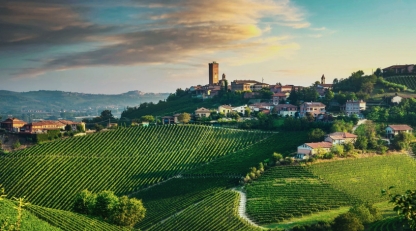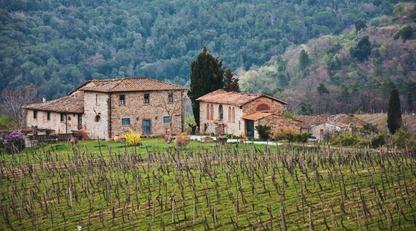- Italy is the best-performing fine wine region year-to-date.
- Some Italian brands have recorded positive movement as high as 15% in the last six months.
- Piedmont’s edge in the fine wine market can be attributed to historical significance, limited production, and an increase in global appreciation.
Amid economic fluctuations and changing market trends, the wine investment landscape has seen varied performances across regions. However, Italy, and particularly the Piedmont, has stood out for its robustness and resilience, outperforming other regions in maintaining and even enhancing its investment appeal.
Italy’s performance in a bearish market
The Liv-ex Italy 100 sub-index, which tracks the price performance of the top 100 Italian wines, has shown resilience in the current bearish market. While the broader Liv-ex 1000 index, representing a wider range of global wines, has experienced a decline of 5.2% year-to-date, the Italy 100 sub-index has seen a relatively minor decrease of 1.7%.
This indicates a sustained interest in Italian wines, despite broader market uncertainties. Some Italian brands have even recorded positive movement in the last six months as high as 15%.
The rising stars of Piedmont
A significant contribution to this trend comes from the Piedmont, specifically Barolo and Barbaresco.
Produttori del Barbaresco, a renowned cooperative known for its high-quality production, has seen impressive gains across a range of its wines. The Rabaja Riserva has risen 15% since the start of the year. The wine has an average case price of £968 per 12×75, and a Wine Track critic score of 94 points.
From the same producer, the more affordable Ovello Riserva is up 9%, while the Montestefano Riserva is up 8%.
From Barolo, Cascina Fontana has shown consistent returns. It has appreciated 6% in the last six months and a remarkable 105% over the last decade. The wine’s affordability at £665 average price per case makes it a value-driven choice for investors.
Meanwhile, Elio Grasso’s Barolo Gavarini Chiniera has increased 4% in the past six months and an impressive 110% in the last decade.
Why Italy, and why now?
The resilience of the Italian wine market, particularly in premium segments like Barolo and Barbaresco, can be attributed to several factors such as historical significance, quality, limited production, and growing global appreciation for the value on offer.
Wines from Piedmont are steeped in history and are globally recognised for their quality and complexity, attracting both connoisseurs and investors.
The limited production and exclusivity of certain labels ensure their demand remains high, even in less favourable economic conditions. While these wines are highly sought-after, the brands above continue to offer value – all being under £1,000 a case despite recent gains.
Finally, Italian wines continue to see growing appreciation in key markets such as the UK, USA and Asia, broadening the investor base.
As we navigate through fluctuating markets, Italy, especially Piedmont, holds firm, demonstrating potential for growth. For investors, Barolo and Barbaresco represent stability, quality, and a legacy that stands resilient against the tides of economic change.
WineCap’s independent market analysis showcases the value of portfolio diversification and the stability offered by investing in wine. Speak to one of our wine investment experts and start building your portfolio. Schedule your free consultation today.

